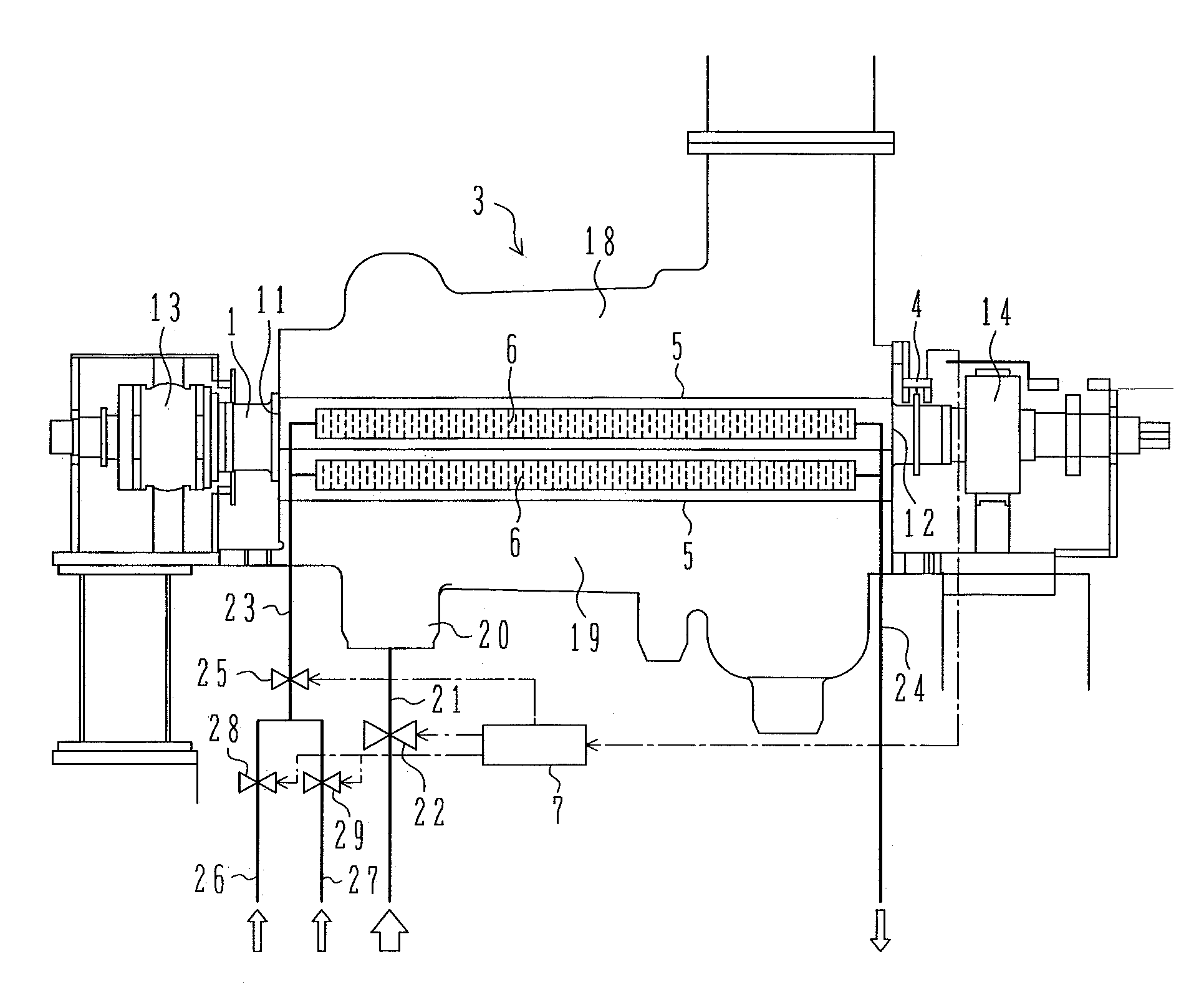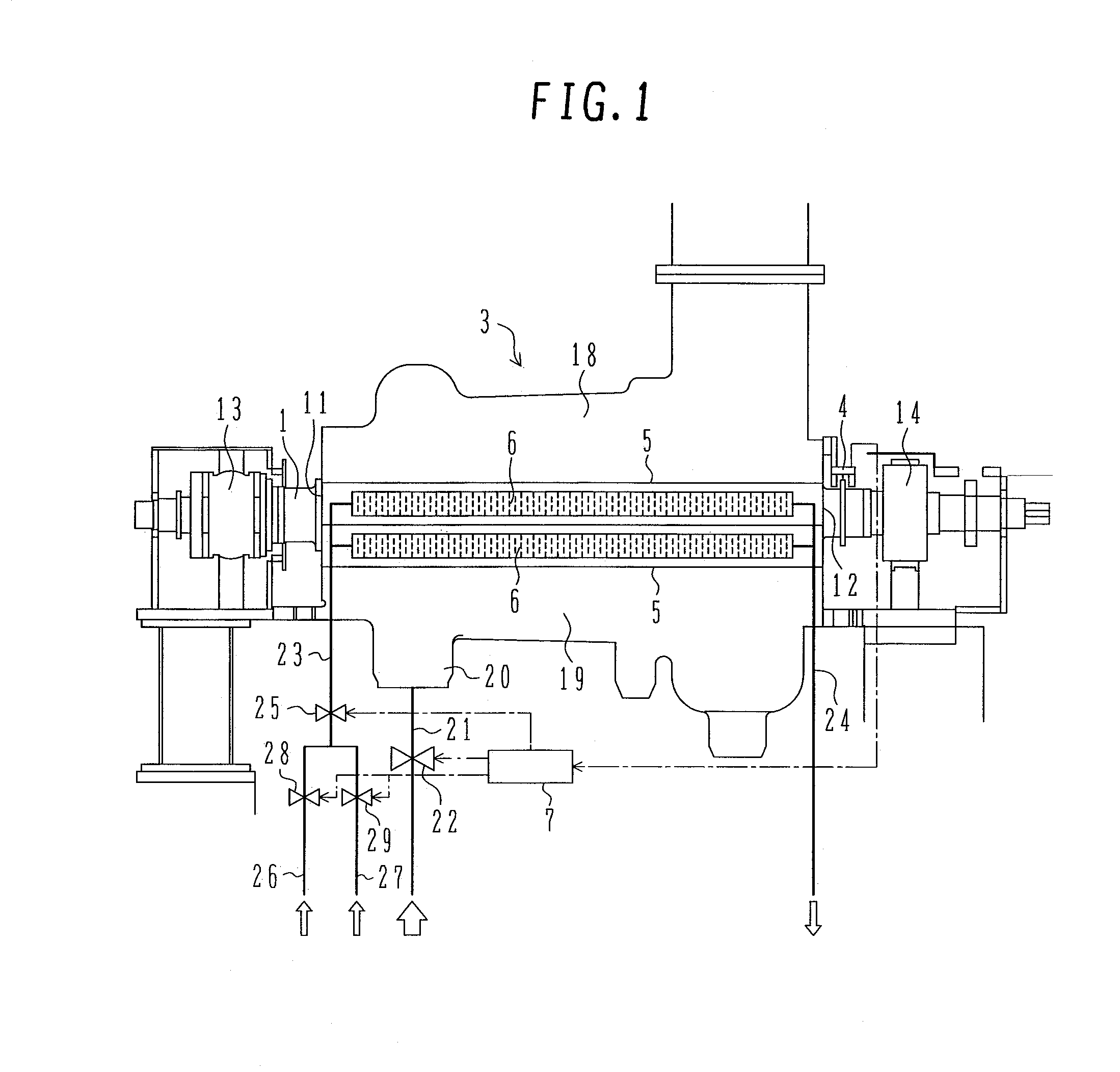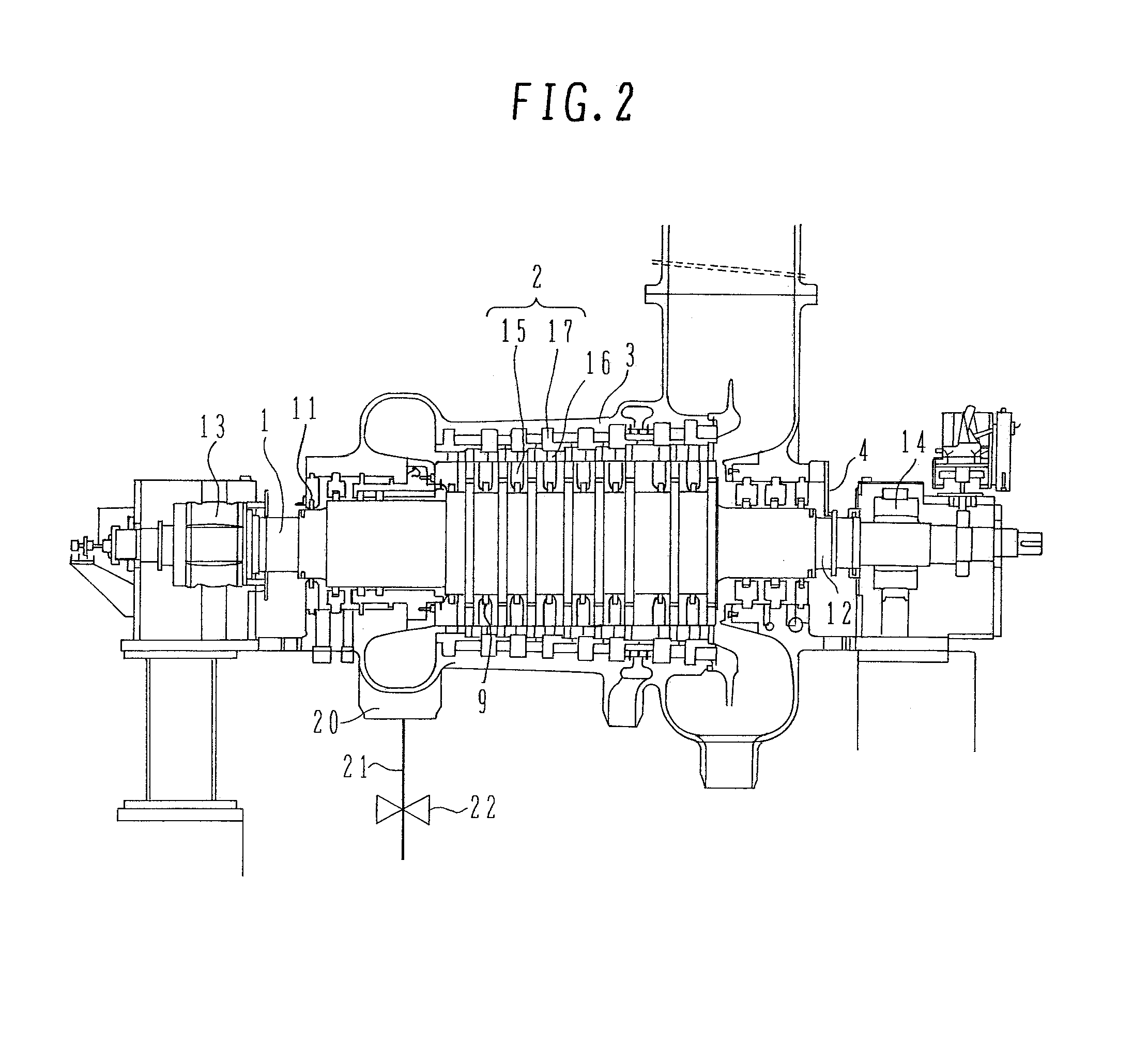Steam turbines, seals, and control methods therefor
a steam turbine and seal technology, applied in the direction of machines/engines, stators, liquid fuel engines, etc., can solve the problems of difficulty in practical application and lack of appropriate measures, and achieve the effect of improving the efficiency of the steam turbine, shortening the time required for unsteady operation, and reducing the leakage of steam during operation
- Summary
- Abstract
- Description
- Claims
- Application Information
AI Technical Summary
Benefits of technology
Problems solved by technology
Method used
Image
Examples
first embodiment
First, a description will be given about the present invention with reference to FIGS. 1 to 7.
FIG. 1 is a side view of a steam turbine according to a first embodiment of the present invention, FIG. 2 is a sectional view thereof, FIG. 3 is an enlarged diagram of a rotor and the vicinity thereof in the steam turbine shown in FIG. 1, and FIG. 4 is an enlarged, schematic side view of a seal body in the steam turbine shown in FIG. 1.
The illustrated steam turbine of the first embodiment mainly includes a rotor 1, diaphragms 2 which surround the rotor annularly from the outer periphery side of the rotor, a casing 3 which encloses the diaphragms 2 and the rotor 1, a displacement detector 4 for measuring a difference (designated “d”) in thermal expansion between the casing 3 and the rotor 1, heating / cooling devices 6 attached to flanges 5 of the casing 3 to heat or cool the flanges, a controller 7 which makes control so that the flanges 5 are heated or cooled by the heating / cooling devices 6...
second embodiment
the present invention will be described below.
A main feature of this second embodiment resides in that heating or cooling of the flanges 5 of the casing 3 is started after moving the seal bodies radially outwards of the rotor 1 and the seal bodies are moved back to their original positions after stop of the cooling or heating, thereby eliminating the problem caused by a thermal expansion difference.
FIG. 9 is a side view of a steam turbine according to a second embodiment of the present invention and FIG. 10 is a sectional view thereof. FIGS. 11A and 11B are enlarged views of a portion XI indicated with a dotted line in FIG. 10, of which FIG. 11A shows a state in which seal bodies have been moved radially outwards of the rotor and FIG. 11B shows a state in which the seal bodies are in neutral positions. The same portions as in the previous drawings are identified by the same reference numerals as in the previous drawings and explanations thereof will be omitted.
The illustrated steam ...
third embodiment
the present invention will be described below.
This third embodiment is the same as the first embodiment in that the expansion difference d is controlled by the controller 7B without retracting seal bodies radially outwards of the rotor 1. In this connection, this third embodiment is characteristic in that when sealing fins are likely to contact one another, the steam turbine is controlled so as to minimize the time required for retracting the seal bodies radially outwards of the rotor 1. A mechanical structure of the steam turbine of this embodiment is the same as that of the second embodiment and therefore explanations of its constituent elements will be omitted.
The controller 7B used in this embodiment, as in the second embodiment, also uses the expansion difference d as an index to determine the timing for opening or closing each of the valves 22, 25, 28, 29 and 47 and, as preset values to be stored in advance, it stores a preset value Z which is the fourth type of a preset value...
PUM
 Login to View More
Login to View More Abstract
Description
Claims
Application Information
 Login to View More
Login to View More - R&D
- Intellectual Property
- Life Sciences
- Materials
- Tech Scout
- Unparalleled Data Quality
- Higher Quality Content
- 60% Fewer Hallucinations
Browse by: Latest US Patents, China's latest patents, Technical Efficacy Thesaurus, Application Domain, Technology Topic, Popular Technical Reports.
© 2025 PatSnap. All rights reserved.Legal|Privacy policy|Modern Slavery Act Transparency Statement|Sitemap|About US| Contact US: help@patsnap.com



